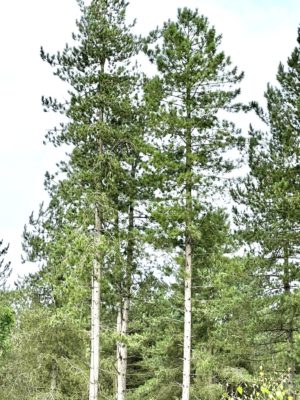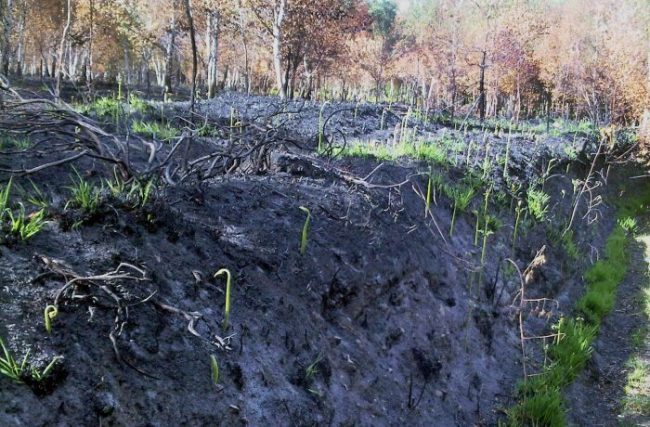After-effects of forest fires.

In 2018, the blog reported on the extensive fires in Sweden, a country noted for its forests and woodlands, which cover approximately half of the country. Once the trees were mainly broad leaved species, but then oaks and alders began to decline. By the middle of the twentieth century, Spruces and Pines were dominant. This was mainly due to forestry management, to produce wood for fuel, charcoal [used in iron smelting], potash, tar and timber (for building).
Fires burnt from the extreme north down to Malmo in the south. These fires affected some 20,000 hectares and destroyed woodlands valued at [circa] £50 million. Now work by scientists at Uppsala University, the Swedish University of Agricultural Sciences (SLU), and the Swedish Meteorological and Hydrological Institute (SMHI) have examined the effects of the fires (of 2014) in the Vastmänland province, where the fires were ferocious, burning down into the soils. They have found that
- the 'forested areas' continued to lose carbon for several years after the fire, and that
- nitrate and phosphate input to streams and rivers increased after the fires.
This spring and summer have again witnessed intense and widespread fires across the Mediterranean region, Canada and the United States. Fires are a problem not only because of their immediate destructive potential, but because they result in the release of carbon dioxide - which further contributes to global warming and climate change. The United Nations Secretary-General said recently “The era of global warming has ended; the era of global boiling has arrived.”
Data on these fires is not available as yet, but studies of the boreal fires in 2021 suggest those fires released some 1.76 billion tonnes of carbon dioxide into the atmosphere. The fires contributed nearly one quarter of world wide carbon dioxide emissions from fires in that year.

Woodland recovering from a fire
Boreal forests store roughly twice as much carbon in their trees and soil as tropical forests. These forests (often referred to as the Taiga) surround the Arctic Circle and research suggests the Taiga is warming faster than the global average, so areas like Northern Canada and Siberia now experience more heat and drought than in the past, and consequently are more likely to suffer from fires.
Clearly, when there is a fire, carbon dioxide (and many other carbon compounds eg soot / small particles) are released by the burning of the trees but there is also the effect of fire on the soil and its organic content - the humus. Research indicates that during the fires in the boreal area some 150 tonnes of carbon dioxide may be released into the atmosphere per hectare. Furthermore, even after the fire, carbon continues to be lost from the soil. It may take some three years for carbon uptake by the soil to be recorded.
Fires also lead to the rapid loss (leaching) of nutrients (e.g. phosphate) to local lakes and rivers - as there is little or no vegetation to absorb the nutrients. Rainfall is not intercepted by vegetation and so the flow of streams increases ( sometimes by 50%). A research paper produced by the Desert Research Institute (in Nevada) has indicated that smoke from the burning of pines has the effect of making soil particles more water-repellent. This repellency of smoke-affected soil particles could help explain the increased flooding, erosion, and surface runoff in fire damaged areas.

Comments are closed for this post.
